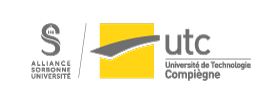Enaction and Enactive Interfaces: A Handbook of Terms
Résumé
Enaction is a recent approach in psychology and in cognitive sciences and it remains not easy to understand and to situate. Its introduction in the field of Computer Technology and Multimodal Interfaces has been initiated explicitly in the FP6 Enactive Interfaces Network of
Excellence. It is nothing less than a conceptual revolution, an important paradigm shift.
This leads to necessary confrontations between several disciplines in order to bridge gaps, understand different ways of thinking, plunge within unfamiliar definitions, rub up with different schools, and work to extend each domain by new concepts, methods and results. Enaction and Enactive Interfaces: an handbook of Terms aims at overcoming the interdisciplinary gap inherent to this new paradigm. It has been designed as a tool to constitute a common vision on Enaction, Enactive Interaction, Enaction Knowledge and Enactive systems, allowing students and researchers to reach, at a glance, a sufficient interdisciplinary level, in order to tackle efficiently the new question of « Enaction and Technology ».
Through a wide panel of words, terms, expressions, presented in a synthetic form, shorter than scientific papers or disciplinary books, it aims at creating a global understanding of the Enactive paysage, and stimulating new researches at the cross-point of disciplines, and ultimately at fostering a new generation of young researchers on Enaction and Enactive Systems.
Differently from dictionaries, the handbook includes debates, theoretical problems, controversies, expressions of complementary irreducible approaches. Terms are related to research in progress, addressing debates or schools differentiations, addressing other unfamiliar frameworks for laypersons of other disciplines.
Differently from several on-line encyclopaedia, it includes the names of the authors and contributors; the contents are certified by experts through consensus meetings, and they refer explicitly to their scientific context with a minimal set of sufficient references. And finally, relations with the field of Enaction are discussed.
In order to guaranty an optimal exploration of the Lexicon and to avoid the reader to be trapped within a sub-domain of expertise, the technique of related items has been used to stimulate interdisciplinary exploration with a sufficient internal connectivity.
The Handbook comprises about 200 terms covering the different fields necessary to explore the landscape of enaction and technologies: sensory-motor theories of interaction, multimodal integration, haptic and multimodal interfaces, instrumental interaction, virtual reality, design, human-computer interfaces, paradigms in cognitive sciences, robotics and teleoperation. Most
of them have been written in collaboration by authors from different disciplines.
By nature of the contents closely linked to researches in progress, the process followed was original. It was an iterative process that accompanied the progress of the researches all along the Enactive Interfaces project. A restricted core group proposed a first list of terms from the initial expertise of the members of the Enactive network. The list was improved bit by bit from research documents provided within the Enactive network. Most of them are available on the website of the Enactive project. Most of the researchers of the Enactive network, seniors as well as young researchers, were involved actively in the process, exchanging and debating through web dedicated facilities. When scientific materials attained a certain amount, stabilized items have been improved, by merging, renaming, splitting, extending operations, leading to reach the expected level of convergence and balance between disciplines and approaches.
Among the chosen terms, some had already a long history. The text does not only provide a definition, but revisits the term in depth, emphasizing how its meaning and usages are questioned, transformed, or nourished, under the light of Enaction and Enactive Interfaces.
Other terms are fully novel, in which case the text allows introducing the new concepts at hand. Some of them led to multiple definitions, whether because they represent stabilized different definitions in different disciplines whether because they underlie non-reducible schools and approaches. We respected these differences as representative of the vividness of the domain.
Fichier principal
 Handbook_Lexicon_Enactive-Interfaces_1:4_Pages-0-100.pdf (2.78 Mo)
Télécharger le fichier
Handbook_Lexicon_Enactive-Interfaces_2:4_Pages-101-200.pdf (2.67 Mo)
Télécharger le fichier
Handbook_Lexicon_Enactive-Interfaces_3:4_Pages-201-300.pdf (2.7 Mo)
Télécharger le fichier
Handbook_Lexicon_Enactive-Interfaces_4:4_Pages-301-338.pdf (953.24 Ko)
Télécharger le fichier
Handbook_Lexicon_Enactive-Interfaces_1:4_Pages-0-100.pdf (2.78 Mo)
Télécharger le fichier
Handbook_Lexicon_Enactive-Interfaces_2:4_Pages-101-200.pdf (2.67 Mo)
Télécharger le fichier
Handbook_Lexicon_Enactive-Interfaces_3:4_Pages-201-300.pdf (2.7 Mo)
Télécharger le fichier
Handbook_Lexicon_Enactive-Interfaces_4:4_Pages-301-338.pdf (953.24 Ko)
Télécharger le fichier
Origine : Publication financée par une institution
Origine : Publication financée par une institution
